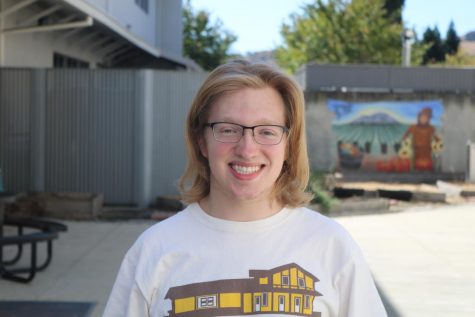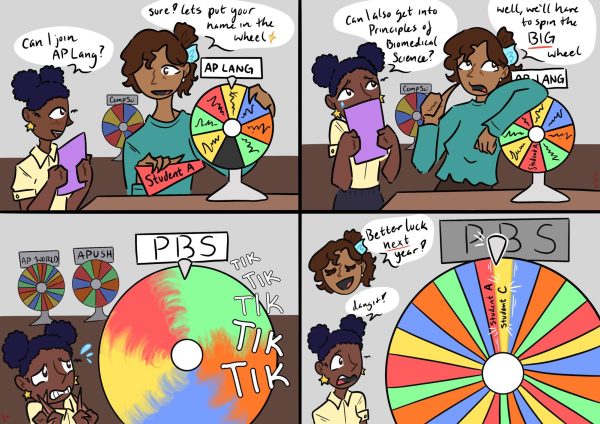Keeping students safe means ending the SRO program
As the COVID vaccine begins its national rollout, we are hopefully on the cusp of defeating a public health crisis and being able to return to a healthy school environment.
But there is more to a healthy campus than just epidemiology. We have to consider the physical and mental safety of students. And while cooperation with police is often useful to that end, such cooperation must not involve school resource officer (SRO) programs.
It’s time for the San Ramon Valley Unified School District to reconsider the SRO program.
Partnerships between police and schools can take different forms depending on the specific context, but in our district, the SRO program is administered by San Ramon and Danville police departments. Each department deploys department officers to the secondary school sites in their respective cities. Prior to the pandemic, there were three officers from San Ramon PD and two officers from Danville PD assigned to schools.
SROs in our district are sworn officers with their city’s respective department. They are not hired security, and do not form a separate police department of their own.
Unfortunately, the everyday presence of officers in schools increases students’ fear, according to a 2011 paper published in the peer-reviewed sociological journal Youth and Society.
Thus, by ending the student resource officer program we can reduce student fear on campus.
And reducing student fear has real, positive benefits for school safety. According to the Texas School Safety Center at Texas State, fearful students are more likely to have poor grades, drop out of school or be truant. They’re also less likely to attend college and more likely to bring weapons to school. This means school resource officer programs may cause more weapons to be brought to schools, not less.
In turn, drop-outs are more likely to end up in jail over the course of their lives, according to the Federal Reserve Bank in Richmond, Virginia. This and other similar phenomena are commonly referred to as the “school-to-prison pipeline”.
School resource officer programs also increased the number of known drug and weapons offenses, according to a 2020 study published in Criminology and Public Policy. Of course, part of this increase is because SRO programs will be able to catch more crimes in the act – something the authors of the study acknowledge.
But if solely awareness was the main drive behind the rise in offenses, we would expect that the increase would occur suddenly and then level off – a conclusion the authors agree with. That didn’t happen. Instead, offenses continued to rise for 20 months after SRO programs were introduced. The study also specifically studied public secondary schools in California, making it especially applicable to our school district.
A 2017 study that argues in favor of SRO programs even acknowledges that the majority of arrests for violent activity on campus are for minor “scuffling”, and that SRO programs result in a rise in arrests of young children.
Negative interactions with the legal system, such as being arrested as a child, can lead to increased negative interactions with the criminal justice system in the future, contributing further to the school-to-prison pipeline. Is the cost of ruining students’ lives worth stopping some schoolyard scuffles?
When we imagine a situation where school resource officers are needed in schools, we often go straight to school shootings and other instances of violence – not unreasonably, considering the plethora of threats we’ve had on district campuses over the past several years.
“I don’t want to be the guy on the board that voted to get rid of police officers when three months later there’s some tragedy because cops weren’t there,” former district Board of Education President Greg Marvel said during a school board candidate forum last year.
One positive aspect of a school resource officer program is that it allows officers to be in close proximity to violent incidents on campus that require law enforcement’s attention. But that strategic advantage frequently fails to materialize into keeping students more safe.
Unfortunately, school resource officers just aren’t meant to stop school shootings. An FBI report studying 27 shootings in American PreK-12 schools from 2000 to 2013 found that only two of the events were stopped by school resource officers. In one additional shooting addressed in the report, a shooter’s decision to take his life was possibly, but purely speculatively, hastened by the arrival of a school resource officer.
The actions of these officers were heroic and commendable, though from a statistical lens we see most school shootings aren’t stopped by SROs. More often, shooting incidents are stopped either when the shooter takes his life on his own volition or when unarmed teachers or students confront and subdue the shooter.
It’s worth mentioning the relative lack of active shooter incidents that were stopped by SROs isn’t because of a low number of SROs. In the 2003-4 school year, 36 percent of American public K-12 schools had on-site police presence, and currently more than 60 percent do.
If the district’s SRO program ends, it will free up manpower for both San Ramon and Danville police departments to spend on other, more beneficial pursuits.
Police do have a role in education, but it isn’t in the classroom or the hallways. San Ramon Police Department has done great work in investigating school shooting threats at Cal High before, and this role is beneficial for public safety.
Furthermore, the Explorer Scout Program that San Ramon Police Department manages allows students to gain early experience in law enforcement and is a boon for the community. The department can look forward to a pool of talented applicants when they grow up, and students have an outlet for career training in an age where that training is exceedingly hard to find without spending tens of thousands of dollars on a four-year university education. Plus, in a time where discussions about criminal justice are more commonplace, it is greatly helpful to the public discourse to have students who have first-hand experience in law enforcement.
It’s important for the safety of our students, teachers, and parents to maintain a cooperative relationship with San Ramon and Danville police departments. But that relationship should not involve school resource officers.
If on-site officers aren’t the answer to student safety, what is?
The National Association of School Psychologists asserts that one of the best ways to keep schools safe is to clearly define behavioral expectations.
At Cal High, the school rules are communicated poorly. The first time I ever read the actual text of the rules in the school handbook was… a few weeks ago, when I did research for this column. I have spent more than five-eighths of my high school career not knowing the specific rules of the school, and I presume the story is not much different for many other students.
District schools should cover their bases by making sure rules are clearly communicated before we decide that police officers are the solution. A yearly assembly or class discussion to review the rules might be dreadful for rebellious teenagers, but it’s certainly preferable to the myriad of negative side-effects of resource officer programs.
Well-communicated rules are one solution, but the truth is student safety is more complicated than what I can fit into a single column. The best way to keep students safe is by involving public safety experts, and students themselves, in public safety decisions at the school and district level.
At the very least, if the school district does not decide to shut down the SRO program, it must begin collecting data on interactions between SROs and students, including arrests and demographic information, and publicly post that data in an easily-accessible location. The school board must also outline a clear set of circumstances in which SRO involvement in a given situation is or is not appropriate, just like Fremont Unified School District does. Transparency is key.
I know for a fact that the Board of Education genuinely cares about students and our safety. It’s time for the board to consider ending the SRO program to make students safer.

Senior Nicholas Harvey is the Editor-in-Chief for The Californian. Writing for the paper since freshman year, Nicholas is especially interested in the...


